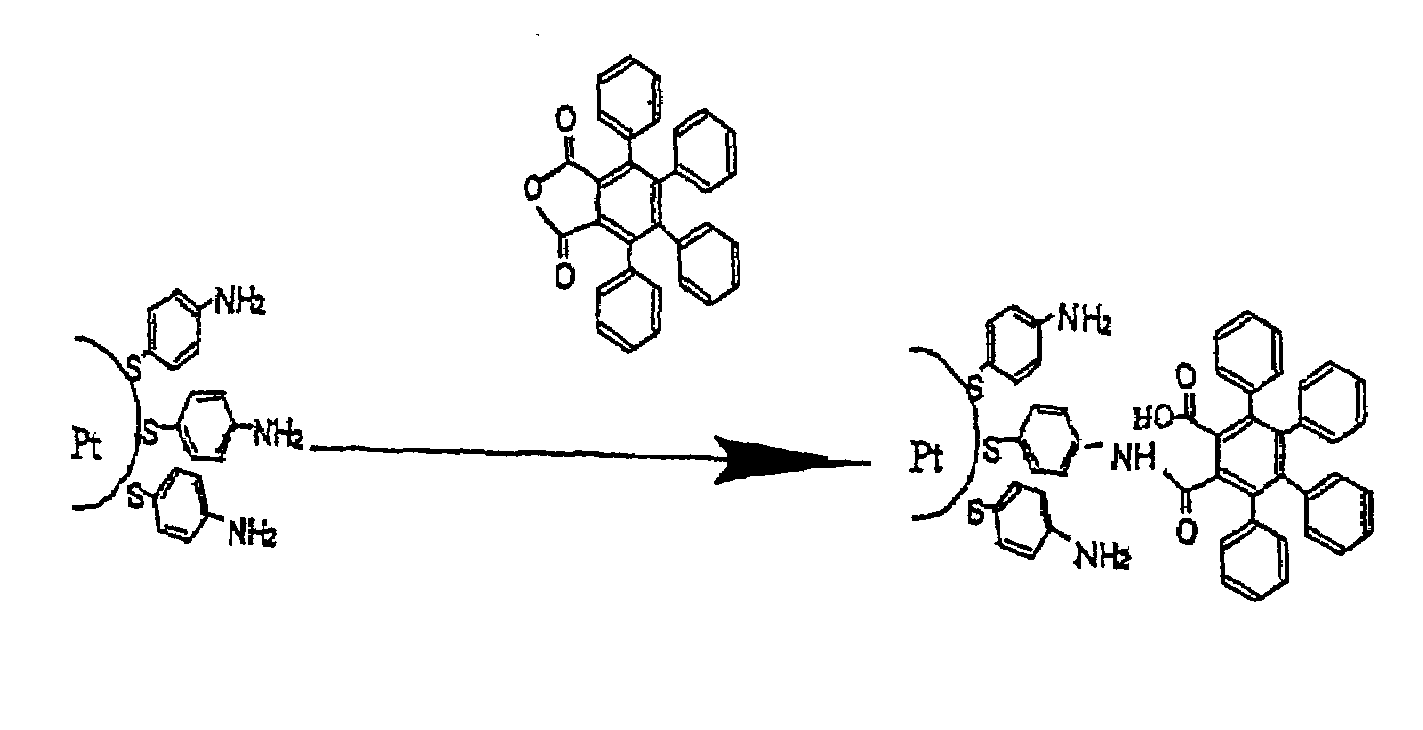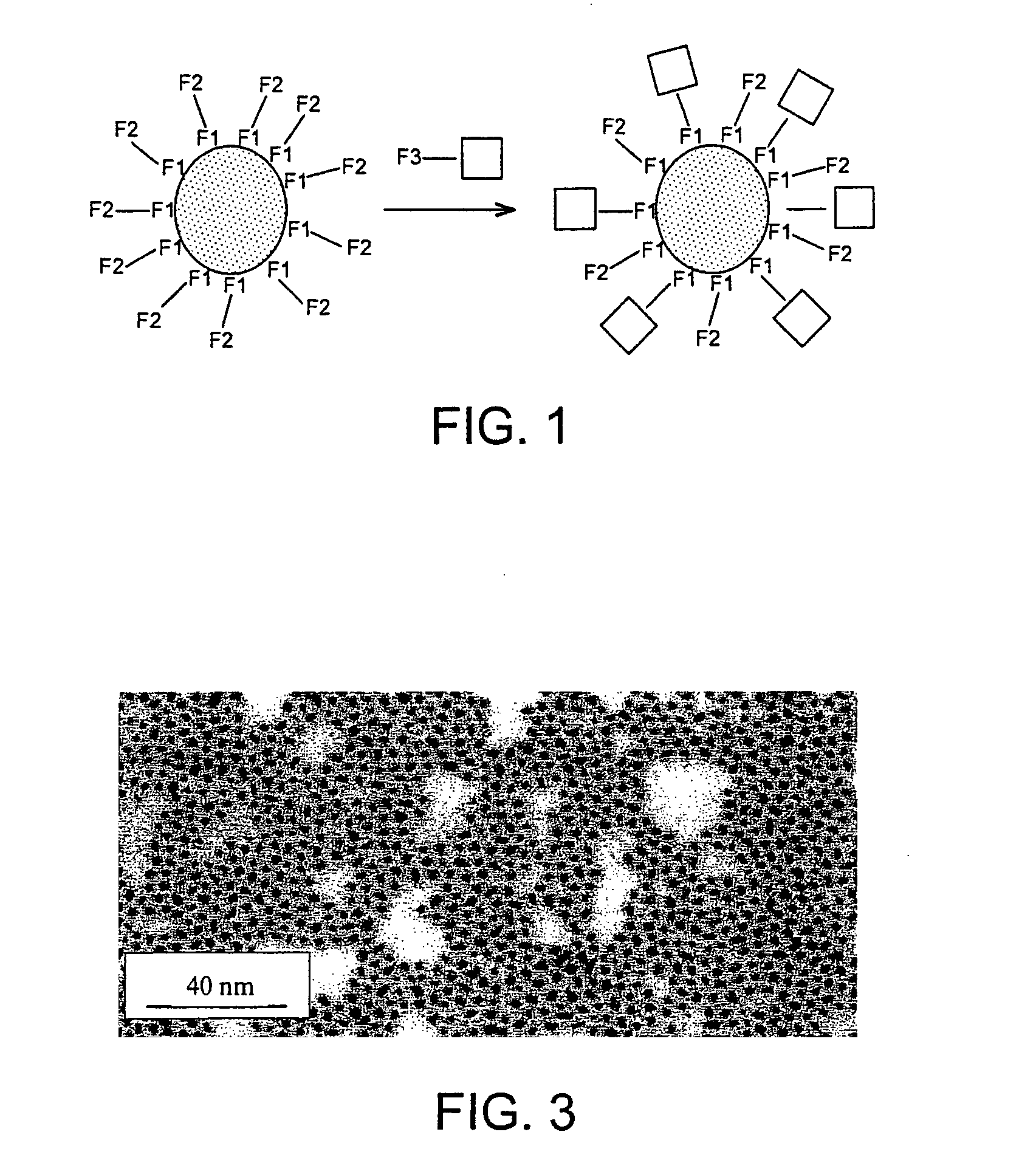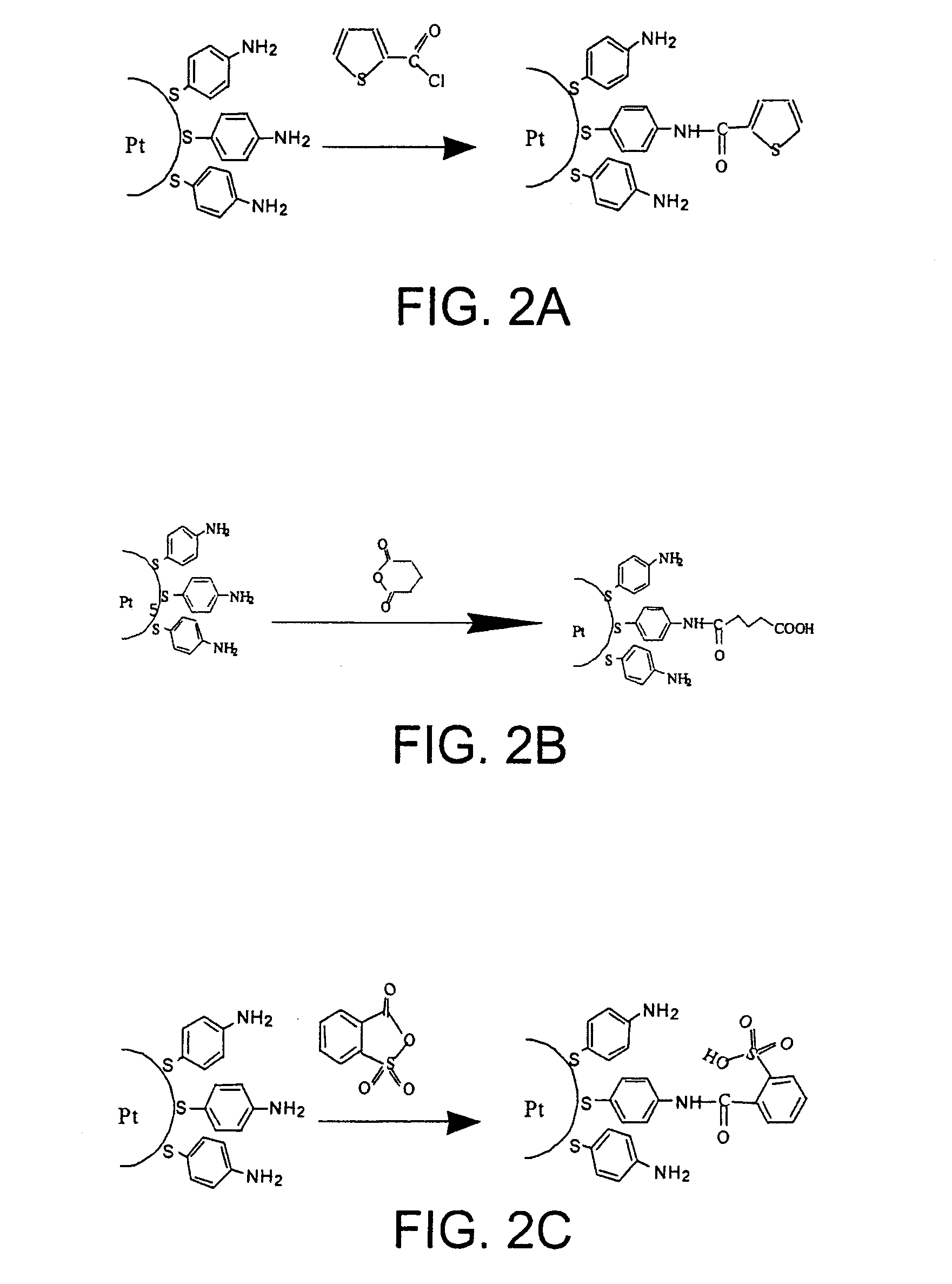Nanoparticles comprising a metal core and an organic double coating useful as catalysts and device containing the nanoparticles
a technology of nanoparticles and metal cores, which is applied in the direction of organic compounds/hydrides/coordination complexes, physical/chemical process catalysts, cell components, etc., can solve the problems of loss of the initial stabilizing effect, introduction of large amounts of platinum into the device, and reduction of the initial catalytic performance qualities
- Summary
- Abstract
- Description
- Claims
- Application Information
AI Technical Summary
Benefits of technology
Problems solved by technology
Method used
Image
Examples
example 1
Preparation of Functionalized Nanoparticles
[0103]Nanoparticles comprising a platinum core and a first organic coating resulting from the attachment of 4-mercaptoaniline molecules to the core are prepared by following the procedure below.
[0104]Three solutions, referred to hereinbelow as solution 1, solution 2 and solution 3, are first prepared.
[0105]Solution 1 is obtained by dissolving 300 mg of platinum tetrachloride in 75 ml of hexylamine. It is orange-coloured.
[0106]Solution 2 is obtained by dissolving 300 mg of sodium borohydride in 40 ml of a water / methanol mixture (50 / 50), followed, after total dissolution of the sodium borohydride, by addition of 20 ml of hexylamine.
[0107]Solution 3 is obtained by dissolving 330 mg of 4-mercaptoaniline disulfide in 30 ml of a methanol / hexylamine mixture (50 / 50).
[0108]At t=0, solution 2 is mixed with solution 1with vigorous stirring. The mixture turns dark brown within a few seconds.
[0109]At t=20-60 seconds, solution 3 is added to the above mi...
example 2
Preparation of Grafted Nanoparticles
[0112]Grafted nanoparticles are prepared by subjecting functionalized nanoparticles in accordance with Example 1 and freshly prepared (given the tendency of 4-mercaptoaniline to degrade spontaneously) to one of the grafting reactions illustrated in FIGS. 2A to 2G.
[0113]These reactions are all performed in the presence of a large excess of compound to be grafted relative to the amount of amine functions borne by the functionalized nanoparticles. To do this, given that 20% of the mass of the functionalized nanoparticles corresponds to the mercaptoaniline residues attached (in the form of thiolates) to the platinum core, and given that the mercaptoaniline has a molar mass of 124 g, the number of moles of compound to be grafted that need to be used in order for there to be an excess thereof, for example of 5 to 10, relative to the number of moles of mercaptoaniline residues attached to the functionalized nanoparticles and, as a result, to the number o...
example 3
Stability Over Time of Suspensions of Functionalized Nanoparticles and of Grafted Nanoparticles
[0158]The stability over time of suspensions of functionalized or grafted nanoparticles is determined by plotting the compression isotherms, recorded at 20° C. and at the air-water interface of a Langmuir tank, of Langmuir films (floating monolayers) prepared from this suspension, immediately upon preparation (t=0), and then at various stages of its ageing.
[0159]The procedure for establishing these isotherms is standard. It consists in preparing, at different times t, a “spreading” suspension by adding 1 ml of chloroform or dichloromethane to 0.5 ml of the suspension whose stability over time it is desired to check. Next, 1.2 ml of the spreading suspension is spread onto the surface of the water contained in a Langmuir tank measuring, for example, 45 cm in length by 6.5 cm in width. The nanoparticles are compressed laterally until a preselected surface pressure is reached, for example of 4...
PUM
| Property | Measurement | Unit |
|---|---|---|
| thickness | aaaaa | aaaaa |
| diameter | aaaaa | aaaaa |
| diameter | aaaaa | aaaaa |
Abstract
Description
Claims
Application Information
 Login to View More
Login to View More - R&D
- Intellectual Property
- Life Sciences
- Materials
- Tech Scout
- Unparalleled Data Quality
- Higher Quality Content
- 60% Fewer Hallucinations
Browse by: Latest US Patents, China's latest patents, Technical Efficacy Thesaurus, Application Domain, Technology Topic, Popular Technical Reports.
© 2025 PatSnap. All rights reserved.Legal|Privacy policy|Modern Slavery Act Transparency Statement|Sitemap|About US| Contact US: help@patsnap.com



